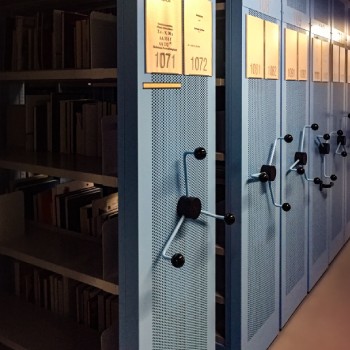
In order to use IT systems sustainably and efficiently, longevity, energy consumption and calculable costs are decisive when planning to archive data for the long term. Expert information including whitepaper from FAST LTA.
As "long-term storage", data archiving is subject to special requirements. Compared to the usual investment periods of three years, energy consumption and maintenance are more important in the archive. IT components and providers must also withstand the critical selection. We take a closer look at the individual aspects and compare technologies
long-term storage of data
Data archiving is the displacement of data that is no longer or only rarely needed in the productive environment. Although the trend is towards "active archives", which can provide data quickly and via random access compared to classic, tape-based offline archives, the main purpose is still: to store data securely and reliably for years and decades.
The cost factor also plays an important role. Since archives usually have longer runtimes than the three to five years that are generally accepted in IT, factors such as energy consumption, maintenance costs and service level agreements also play a greater role. Investments, on the other hand, are mostly incremental (expansion of capacity), and replacement of storage systems is avoided as far as possible due to the constantly growing amount of data and the necessary data migration.
Sustainable data archiving
The topic of sustainability in the archive therefore includes the following aspects:
1. Hardware: Longevity and availability, CO2 balance, energy efficiency, expandability, protection against failure
The selection of the hardware used is generally geared towards the intended use. Since long-term storage is by definition designed for a service life of several years or decades, special requirements have to be met here.
2. Software: Reliability, certification, compatibility with standards, data migration, security against attacks
The right software makes the difference between usable hardware and useless e-waste. If the software for a hardware solution is no longer developed or essential infrastructure is no longer supported, the entire system loses its usefulness.
3. Service: maintenance effort, calculable costs, availability of spare parts
The more complex IT becomes, the more important the associated service level agreements are. Since these are usually mandatory for professional systems, the ability to plan maintenance costs over the long term contributes to the overall balance.
Technologies in comparison
In our free white paper we take a closer look at these aspects of sustainability in data archiving. In addition, you will learn which different technologies are particularly suitable for archiving under which requirements. Tape, hard disk storage and cloud offers compete with different promises and weight the aspects of hardware, software and service individually.
More at FAST-LTA.de
About FAST LTA the FAST LTA is the specialist for secure secondary and long-term storage systems. The combination of durable and low-maintenance hardware, integrated software for data backup and on-site maintenance contracts with a term of up to 10 years ensure long-term, cost-effective storage of data from archive and backup applications. In-house developments such as local erasure coding, sealing using hardware WORM and efficient energy management help medium-sized customers to protect themselves against data loss through ransomware attacks and misconfiguration and to meet regulatory and legal requirements (GDPR). The Munich provider's solutions have proven themselves in thousands of installations in healthcare, public administration, film/TV/video and industry.
